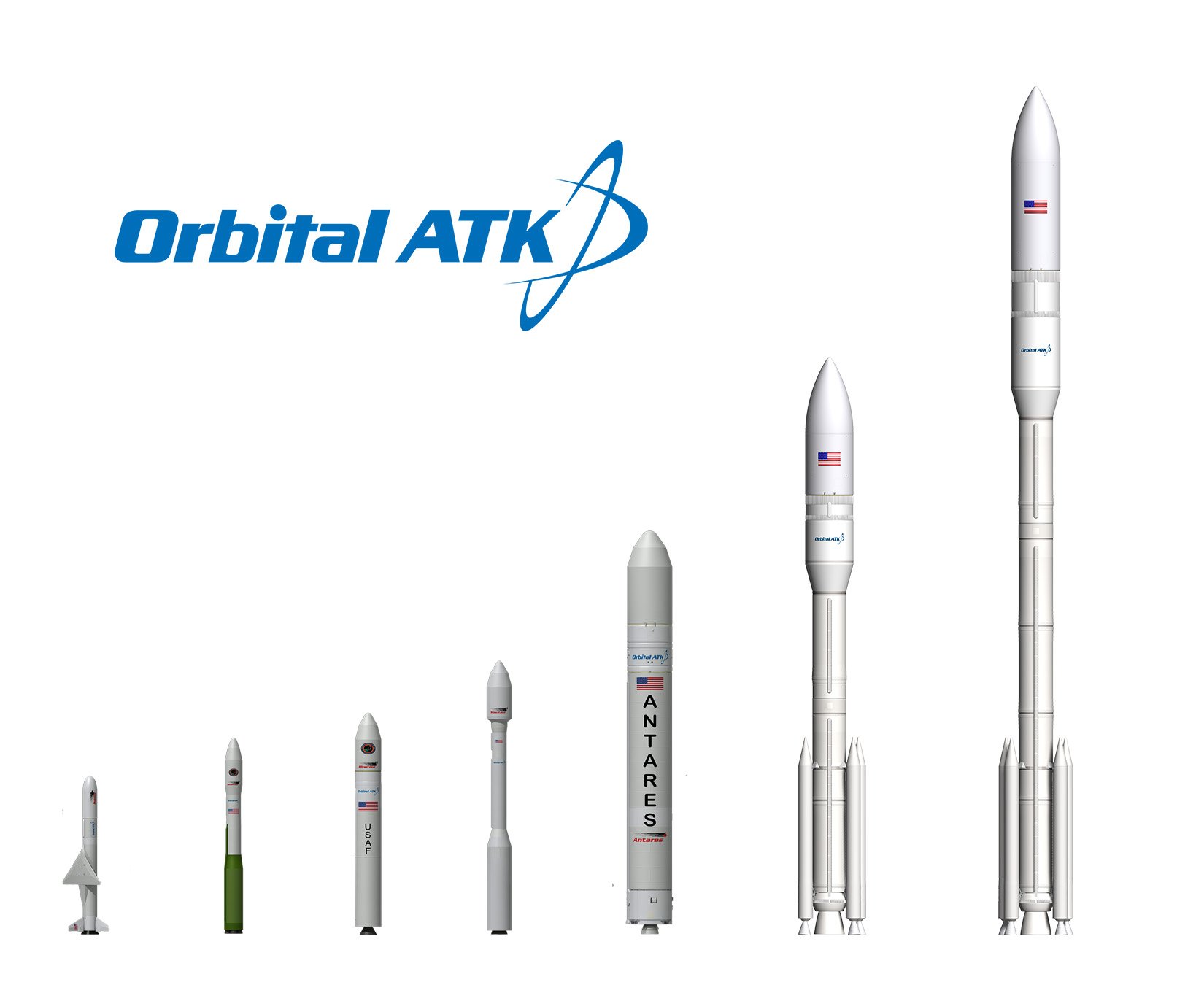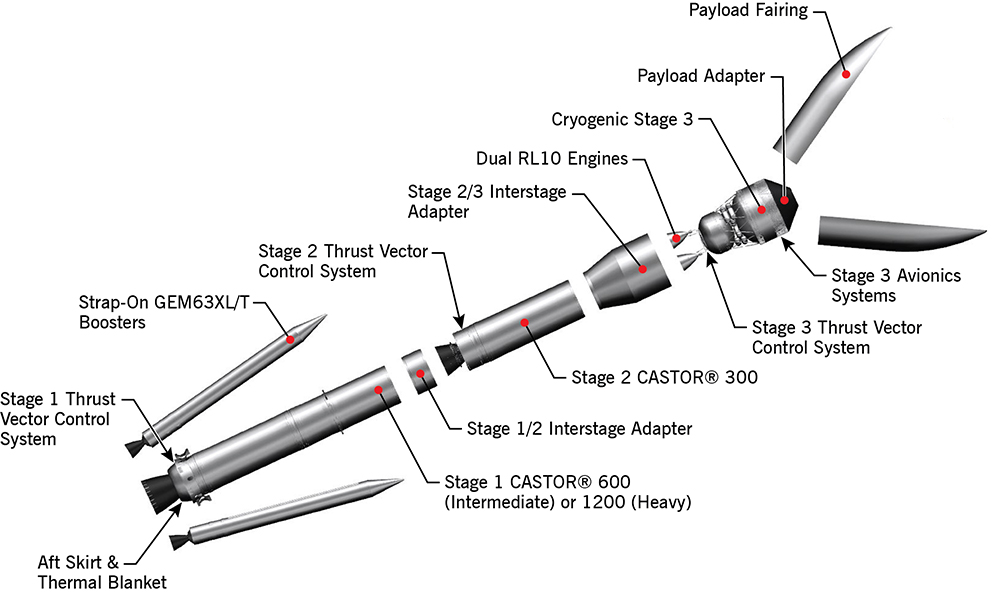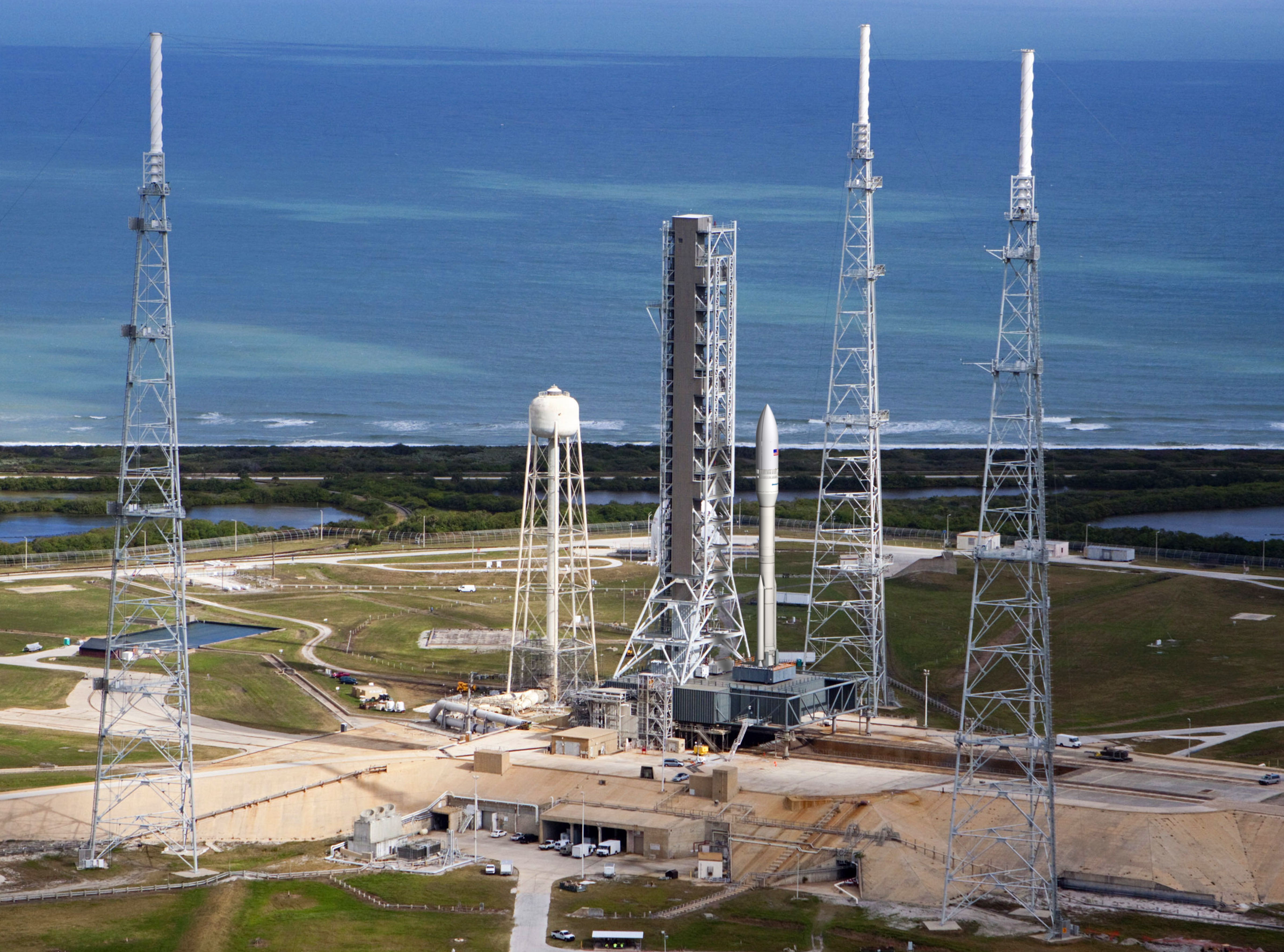Meet OmegA: Orbital ATK Unveils Name, Upper Stage Pick for Next-Gen Rocket
COLORADO SPRINGS, Colo. — Orbital ATK's next rocket will be its biggest one yet, and the company has picked a fitting name for the new booster: OmegA.
OmegaA, formerly known as the Next Generation Launch Vehicle, is Orbital ATK's candidate booster to launch intermediate- and heavy-class military satellites for the U.S. Air Force's Evolved Expendable Launch Vehicle (EELV) program. The rocket will compete with United Launch Alliance, Boeing and Blue Origin for military launch contracts under the Air Force's Launch Services Agreement.
Orbital ATK unveiled the three-stage booster's new name here at the 34th Space Symposium. The company also announced it has selected Aerojet Rocketdyne's RL-10C engine to power the rocket's upper stage. Orbital ATK had been considering the BE-3 engine built by Blue Origin for its own New Shepard spacecraft, according to SpaceNews.

The name is meant to represent "the bookend of the company's rocket lineup," with the "O" and "A" nods to the company's two-part name, Orbital ATK told Space.com. It's also a nod to Omega Centauri, the largest star cluster in the Milky Way. Orbital ATK's Antares, Pegasus and other rockets are named for stars and constellations. [The World's Tallest Rockets: How They Stack Up]
Orbital ATK's OmegA rocket's initial intermediate-payload configuration consists of a solid-rocket booster (derived from Orbital ATK's boosters for NASA space shuttles), a second stage powered by the company's Castor 300 or Castor 600 solid-rocket motor, and a third stage powered by two Aerojet RL-10C engines.

By adding up to six strap-on boosters, OmegA will be capable of launching payloads of up to 22,266 lbs. (10,100 kilograms) to a geostationary transfer orbit, and payloads of up to nearly 17,200 lbs. (7,800 kg)& to geostationary equatorial orbits, according to Orbital ATK. The intermediate-class OmegA is targeted to make its first test launch in 2021. A heavy-class version could follow in 2024 if all goes well.
The Dulles, Virginia-based Orbital ATK and Air Force have spent a combined $250 million over the last three years developing the OmegA rocket, and the company plans to spend more to complete the booster's development and flight-certification process. Construction is already under way on major propulsion elements, Orbital ATK officials said."Orbital ATK is very excited to partner with the U.S. Air Force to develop OmegA, our new EELV-class launch vehicle," Scott Lehr, Orbital ATK's flight systems group president, said in a statement. "Our OmegA rocket provides the best combination of performance, affordability and reliability to support the range of our customer's mission requirements."
Get the Space.com Newsletter
Breaking space news, the latest updates on rocket launches, skywatching events and more!

The rocket's next development phase will begin after the Air Force makes its Launch Service Agreement selections this summer, which would clear the way for the OmegA's remaining development work, and the development of its launch sites. Orbital ATK is considering Launch Pad 39B at NASA's Kennedy Space Center as a potential launch site, and has released an artist's illustration of the new proposed site.
Mike Pinkston, Orbital ATK's deputy general manager for launch vehicles, told Space.com that motor and engine testing for OmegA will begin in 2019, with the booster's solid-fueled stages to be tested at the company's proving grounds in Promontory, Utah. Aerojet Rocketdyne will test the RL-10C engines at its own facility in West Palm Beach, Florida.

Email Tariq Malik at tmalik@space.com or follow him @tariqjmalik. Follow us @Spacedotcom, Facebook and Google+. Original article on Space.com.
Join our Space Forums to keep talking space on the latest missions, night sky and more! And if you have a news tip, correction or comment, let us know at: community@space.com.

Tariq is the Editor-in-Chief of Space.com and joined the team in 2001, first as an intern and staff writer, and later as an editor. He covers human spaceflight, exploration and space science, as well as skywatching and entertainment. He became Space.com's Managing Editor in 2009 and Editor-in-Chief in 2019. Before joining Space.com, Tariq was a staff reporter for The Los Angeles Times covering education and city beats in La Habra, Fullerton and Huntington Beach. In October 2022, Tariq received the Harry Kolcum Award for excellence in space reporting from the National Space Club Florida Committee. He is also an Eagle Scout (yes, he has the Space Exploration merit badge) and went to Space Camp four times as a kid and a fifth time as an adult. He has journalism degrees from the University of Southern California and New York University. You can find Tariq at Space.com and as the co-host to the This Week In Space podcast with space historian Rod Pyle on the TWiT network. To see his latest project, you can follow Tariq on Twitter @tariqjmalik.









